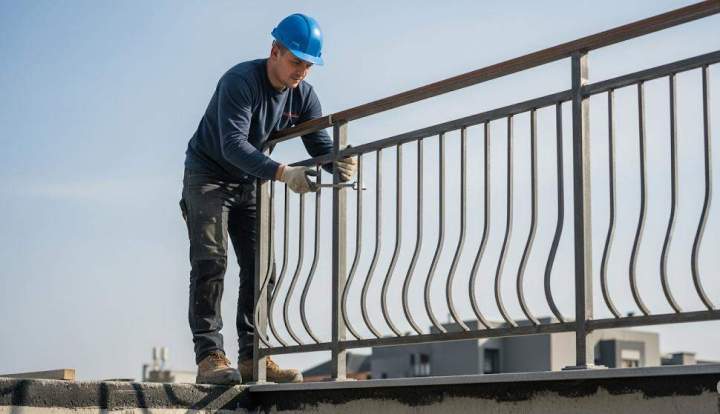Guide to Correct Guardrail Installation Procedures
Guardrail Installation Admin / October 22, 2025

Understanding Guardrail Types
Types of Guardrails
Before installation begins, it’s vital to recognize the different types of guardrails available. These include:
-
W Beam Guardrails: commonly used on highways, these are shaped like a “W” and are designed to absorb impact effectively.
-
Thrie Beam Guardrails: with a more extensive design, these are suitable for high-speed roads, providing greater strength and stability.
-
Cable Guardrails: composed of multiple cables strung between posts, these are flexible and can be beneficial in areas with softer soil.
-
Concrete Barriers: often used for permanent installations, they provide robust protection but can be more difficult to install and remove.
Understanding these options helps in selecting the most appropriate guardrail type based on location, traffic conditions, and specific safety needs.
Pre-Installation Assessments
Site Evaluation
A thorough evaluation of the installation site is crucial. Key factors to assess include:
-
Traffic Volume: High traffic areas may require more robust guardrail systems.
-
Road Geometry: Curves, slopes, and grades influence the type and placement of guardrails.
-
Soil Conditions: The stability of the ground affects how guardrails will be anchored. Soft or loose soil may require deeper posts or additional support.
Conducting a comprehensive site assessment allows for tailored installation, maximizing the effectiveness of the guardrail.
Installation Procedures
Preparation Phase
Once the site has been evaluated, the preparation phase begins. This includes:
-
Gathering Materials: Ensure all components, including posts, rails, and fasteners, are on-site and meet local standards.
-
Marking the Installation Area: Clearly delineate where the guardrails will be installed. This helps avoid misplacement and ensures alignment with road safety regulations.
Installing the Posts
The next step involves securing the posts. This is a critical stage, as the posts are the foundation of the guardrail system. Follow these steps:
-
Digging Holes: Holes for the posts should be dug to a depth that meets local codes, typically between 3 to 4 feet, depending on the soil type and guardrail height.
-
Setting the Posts: Insert the posts into the holes and ensure they are vertical using a level. Proper alignment is essential for the entire guardrail system's effectiveness.
-
Pouring Concrete: Fill the holes with concrete to secure the posts. Allow adequate curing time as per the manufacturer’s recommendations to ensure stability.
Attaching the Guardrails
After the posts are firmly in place, the installation of the guardrails can commence:
-
Aligning the Rails: Position the rails between the posts, ensuring they are level and correctly spaced according to specifications.
-
Securing the Rails: Use appropriate fasteners to attach the rails to the posts. Ensure that all connections are tight and secure to prevent any movement in the event of an impact.
-
End Treatments: Install appropriate end treatments, such as flared ends or terminals, to minimize the risk of injury during collisions.
Final Inspection and Maintenance
Quality Check
After installation, a thorough inspection should be conducted to verify that all components are correctly positioned and secured. This includes:
-
Checking for level alignment.
-
Ensuring all fasteners are tightened.
-
Verifying that the end treatments are installed correctly.
Regular Maintenance
Guardrails require ongoing maintenance to ensure they remain effective. Regular inspections should be scheduled to check for:
-
Damage from impacts or weather conditions.
-
Rust or corrosion on metal components.
-
Cracks or wear in concrete barriers.
Successful guardrail installation hinges on careful planning, precise execution, regular maintenance and the intervention of professionals. By adhering to these procedures, roadway safety can be significantly enhanced, protecting lives and property.
